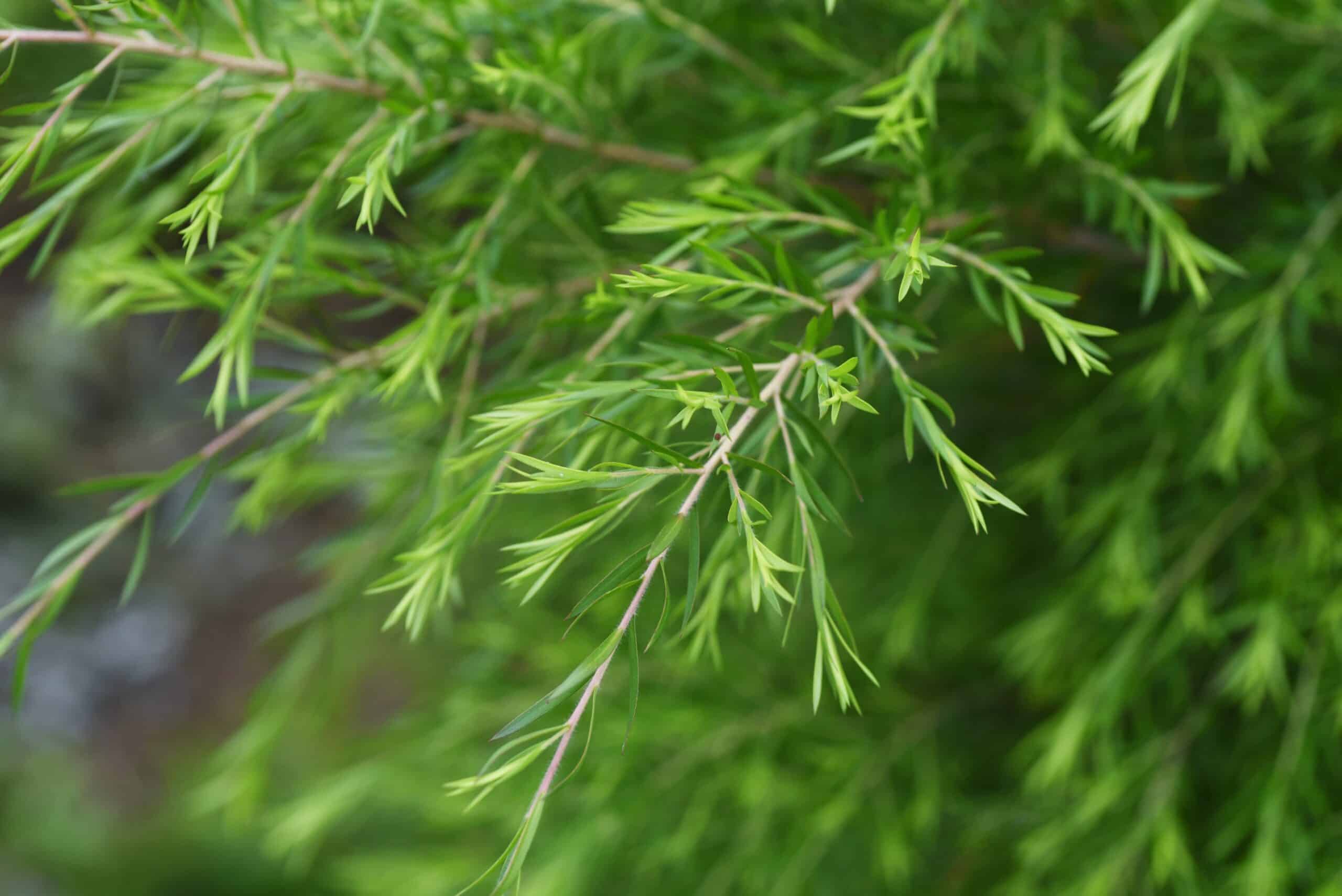The many potential benefits of tea tree oil are probably something you have heard about. Tea tree oil is used in many commercial applications including as an antiseptic in mouthwashes and in deodorants and to fight acne, wounds and fungus.
You can also find many shampoos, conditioners and other hair products as well as body washes that contain tea tree oil.
But what about the tea tree wood and bark itself?
Tea tree wood is used in garden mulch and for commercial applications such as flooring and firewood. It can be used for burning in various styles of fireplaces and can also be used for food smoking due to the mild and woody flavor it provides.
So while the tea tree doesn’t actually produce tea (newsflash!) it does have a number of uses that we’ll discuss below.
Tea tree facts and figures
The tea tree is native to Australia found predominantly in two states: Queensland and New South Wales on the east coast. It’s a shrub or small tree that typically grows to about 20′ (7m) in height and flowers in June.
As such, the tea tree industry is largely centered in Australia although you can of course find products incorporating tea tree oil around the world.
You tend to find tea trees growing in swampy areas along the coast as they prefer moist, wet surroundings but also like full sun. They are perennial so they grow every year and are also harvested yearly. Tea trees regenerate quickly after harvesting.
Tea tree vs manuka tree
The tea tree is part of the Melaleuca genus which itself comprises over 300 species of plants in the myrtle family. You will also hear tea tree mentioned alongside the Leptospermum genus.
As such you often hear the New Zealand manuka tree referred to as a tea tree since it too comes from the Leptospermum family. People then incorrectly assume that manuka tree oil and tea tree oil are the same when in fact they are quite different from one another.
While both oils have strong antibacterial and antifungal properties due to the triketones, flavonoids they both contain, manuka oil contains it at a higher concentration.
Now you know why you pay so much for that small jar of manuka honey, right?
Popular uses for tea tree wood
Tea tree oil is easily the most famous use of the tea tree and it’s likely that the average person only knows about it due to this use. Tea tree oil is sold in pure form but is also added to many skin, hair and other personal products.
But what about the wood from the tea tree? What commercial uses are available and what benefits exist?
Here are popular uses for the wood that comes from the tea tree.
Food smoking – From a wood perspective, tea tree wood chips and bark are often used in Australia and New Zealand for food smoking due to their wide availability and flavor profile. Tea tree wood gives a mild, woody and natural flavor that is sometimes compared to the manuka wood from New Zealand. This makes sense as manukas and tea trees both come from the Leptospermum genus. You’ll often hear manuka referred to as a tea tree.
Firewood – Tea tree is considered a premium firewood that burns very slowly at a very high temperature. You can use tea tree wood in fireplaces, smokers, pizza ovens and other wood-burning appliances. Given that it’s local to Australia, you’ll tend this usage advertised only by Australian and New Zealand businesses and websites.
General construction – Broad leaf tea tree hardwood is used for flooring, fencing, boat construction and other commercial applications. The bark is used for arts and crafts such as baskets and paintings. The cork from the bark is further used inside pillows and mattresses. Again, these commercial applications are largely focused in Australia due to the prevalence of tea tree in the country.
Mulch – Mulch from a tea tree is dark brown and has a rich, fresh fragrance that lasts for some time. The mulch is a byproduct of tea tree oil production. Tea tree mulch can be used in gardens just like other mulches, namely to keep the soil underneath moist and hidden from the direct sun. Tea tree mulch also attracts earthworms but interestingly, is considered to be a repellent to termites rather than a wood that attracts them. Tea tree mulch breaks down relatively slowly when compared to others woods.
Do we get tea from tea trees?
Despite the name, tea doesn’t come from tea trees. The tea plant (Camellia sinensis) is commonly used to make tea leaves that are brewed but it has nothing to do with the tea tree.
The name tea tree was coined by explorer James Cook who used the leaves to boil a tea for himself. But Cook also noticed that parts of the tree were already being used for purposes other than consumption.
He noticed native Australians (Aborigines) using bark of the tea tree for many things such as sealing holes in canoes and for sleeping mats and cradles.
And of course, they used the tea tree oil for skin and health ailments such as coughs and colds and also using the leaves to brew a drink used for a sore throat or skin wounds.
So while the name of the tree refers to one given by an explorer who used it for that purpose, to this date the plant’s leaves, bark, and wood have very different uses.

